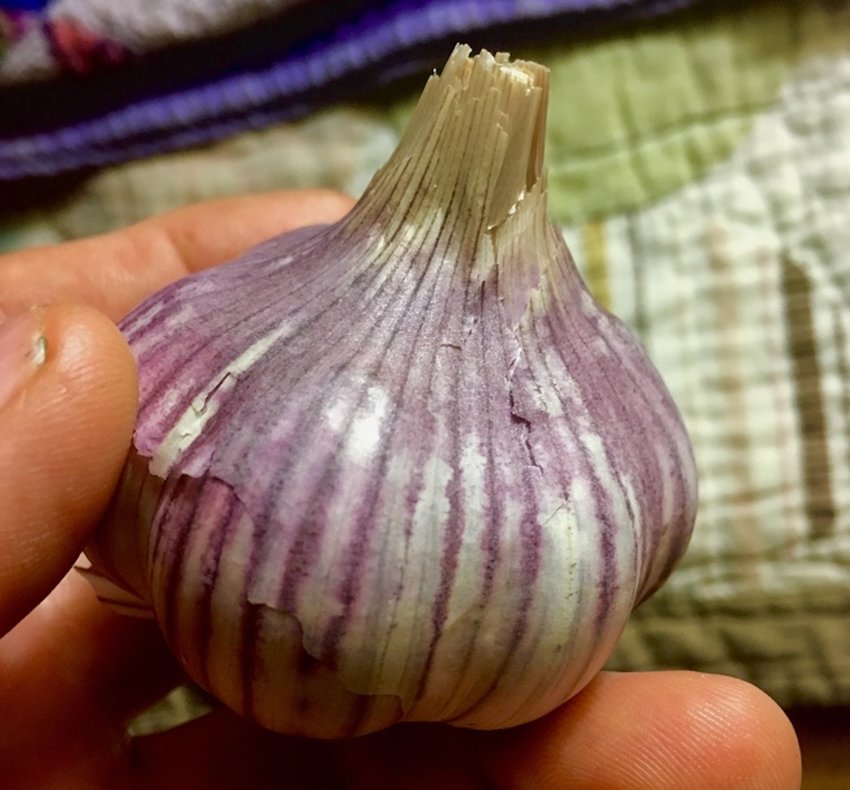Fall is the time of year to plant your winter garlic
Though the summer garden is still going full tilt, I felt a cool waft of Autumn the other morning, just enough to let me know that its busy ant time again. This lazy grasshopper needs to get up and do some weeding, soil reworking, and gathering stuff to start planting for late fall, winter and spring.
I’m a Stoic at heart, trying to maintain a practical indifference to both good and bad events; recognizing that my glass is both half empty and half full, I appreciate what I have without pining for what I don’t, which helps me get the most out of the situation at hand.
Case in point: in spite of the damage caused to my garden by recent hurricane winds and rain - limbs down, zinnias toppled, part of a shed knocked awry - I found a silver lining in how my usual end-of-summer hard-baked soil has been softened and its moisture topped up in time to plant my fall veggies and flowers.
So, after pulling a few weeds and roughing out tree and vine seedlings that popped up over the summer, I dug into some nearly bare patches in flower beds, hand-tilling in my fading spring mulch and a little compost and topped it with freshly fallen leaves and a layer of bark mulch. Now I have garden spots ready to go just as soon as my local garden center gets stocked with little transplants of broccoli, cabbage, swiss chard, kale, and some violas and pansies. Now the hard part’s done, and I have all month to get stuff planted.
It’s almost time to set out garlic, one of the easiest winter crops. I grow both mild and fiery-hot kinds for cooking, plus appreciate the winter foliage and late spring fist-size flowers. I have a few leftover cloves from last spring, plus last weekend I found some at a garden center and bought a couple of fat, locally grown, clove-packed bulbs from a local farmers’ market grower. And I begged three heirloom elephant garlic “toes” from a garden friend.
Sometime late this month or early October I will plant the individual cloves about four inches apart and a couple inches or so deep in some well-drained flowerbed soil and a few in big pots along with winter flowers to brighten my porch and decks. Because they have such shallow roots and fertilizers tend to wash away, I make a point to fertilize very lightly when I plant, and again when the foliage is a few inches high, and then just let them go.
Some I grow just for the flowers, but for most I simply pop off the pointy buds as they appear in late winter (they are edible), to keep energy going down to the bulbs. When the tall leafy tops turn yellow next spring I will dig them, cut off all but a few inches of stem, and hang them out of the weather to cure so they will store better.
There’ll be more stuff to plant, from both traditional and unusual spring flowering bulbs to cold-hardy flowers like snapdragons, colorful kales, and sweet Williams and other dianthus. And I always strew seeds onto bare dirt of mixed colorful lettuces, carrots, beets (all which have beautiful foliage) and overwintering annuals that need fall sowing like larkspur, coreopsis (our official state wildflower), and blackeyed susan.
And the beds and bare spots that I won’t plant this winter get a good sprinkling of clover seeds to both look good all winter and provide rich “green manure” to dig in next spring.
Sooo… planning is done. planting time is nigh.
Felder Rushing is a Mississippi author, columnist, and host of the “Gestalt Gardener” on MPB Think Radio. Email gardening questions to rushingfelder@yahoo.com.

